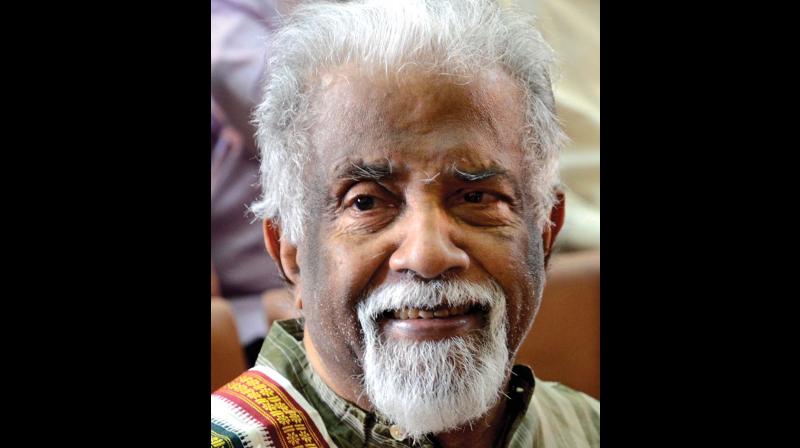ECG Sudarshan visited CUSAT, encouraged youth
A major contribution by Prof. Sudarshan was in the area of quantum optics.

Dr E.C.G. Sudarshan’s voyage into the world of theoretical research started when he won a graduate scholarship and went to University of Rochester, New York, in 1955 and joined the team of Robert Marshak. At the university, Prof. Sudarshan closely studied the beta decay process (the phenomenon of emission of electrons from the nucleus of the atom) and came to the conclusion that none of the theories available at that time explained the observed facts. He proposed a new fundamental force responsible for the beta decay process called the V-A theory of weak force. He presented his preliminary work in a conference in Italy. Richard Feynman and Murray Gellman caught hold of these ideas and expanded and elaborated the concept in their work which brought Nobel Prize to these scientists later.
A major contribution by Prof. Sudarshan was in the area of quantum optics. Light is considered an electromagnetic wave. But many experiments show that light exhibits corpuscular nature also which is an indication of its quantum behavior. Light emitted by a laser is coherent in nature, that is, all the waves emitted by the laser are in perfect step. Prof. Sudarshan succeeded in developing a quantum representation of coherent states. Unfortunately for him, Professor Glauber in Harvard expanded on these ideas and published a more extensive paper. Glauber in 2005 was awarded Nobel Prize for this work, ignoring the work of Prof. Sudarshan in this field. Sudarshan was bitter about these developments. He once retorted that “the Committee may give prize to any dog, but it is a dirty crime to rob my work and pass it on to others”.
What made Prof. Sudarshan famous was his work on particles ‘faster than light’ called the Tachyons. Many people think he contradicted Einstein in his theory by proposing faster than light particles but he did not. According to Einstein, no physical objects can have velocities higher than that of light. However, generalisation of the special theory of relativity is a mathematical possibility and Tachyons are admissible under this condition. As ill-luck would have it, Tachyons are not discovered till date and hence Prof. Sudarshan lost another opportunity to get the Nobel Prize.
His work on quantum Zeno effect is also a notable one. Here the effect of observations on quantum systems have been analysed in detail and the results show that the system is disturbed substantially by the process of observation. In other words, the old adage “watched water never boils” is true in quantum domain as well. He also has contributed to area of open quantum system and also discovered the spin- statistics theorem. He taught in University of Rochester, Harvard University and finally settled in University of Texas at Austin. He has received several awards including Dirac Medal, Majorana Prize, C.V. Raman Award, Bose Medal and also Padma Vibhushan (2007) .
He was responsible for setting up the Centre for Theoretical Studies (CTS) in IISc, Bangalore. In the 1980’s he shared his time between Texas and Chennai as the director of Institute of Mathematical Sciences and made IMSc a great institution even though he had private grievances about the science management system in India (which he had aired many times to this writer in private). He took only a salary of one rupee for his Chennai job. He had visited CUSAT many times and discussed the research work with youngsters in the physics department and encouraged them in many ways. He has a calm and serene attitude and his lectures are a pleasure to listen to. He used to be very informal with the people he comes into contact with. He also liked the homely Kerala food. He considered himself as a Vedantic Hindu and was much influenced by J. Krishna Moorthy. ‘Yogavasishtam’ was an ancient Indian test from which he used to quote on many occasions.
(The writer is a formerly, director, International School of Photonics &Dean, Faculty of Technology, CUSAT. He is also the president of the Kerala Science & Technology Society)

